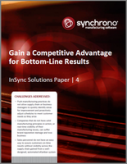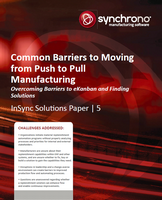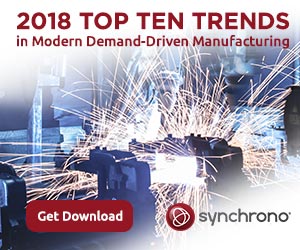Kanban Series White Paper: Gaining Confidence: Syncing Supplier Delivery to Customer Demand
Demand-driven and lean production allows manufacturers to be more responsive to consumer needs while increasing their own profitability. It also reduces the reliance on forecasts by linking demand signals and providing real-time data directly to suppliers. Customers, in turn, demonstrate their confidence by eliminating buffers. This works to build lasting client relationships by ensuring customer service that exceeds expectations and drives results. Download this resource to learn more.






